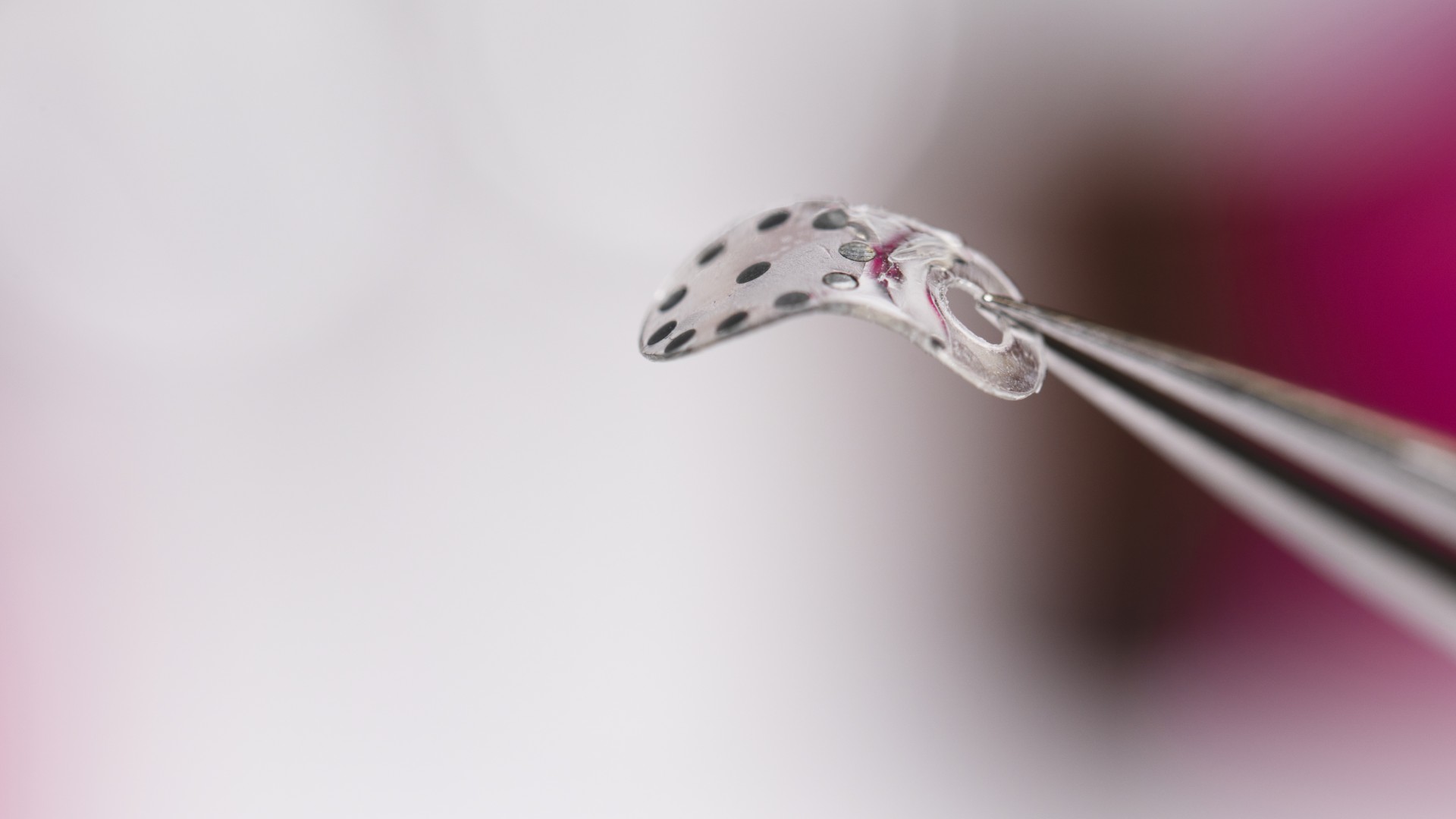Life-threatening 'leaks' after surgery could be flagged faster with tiny new device
A new implantable device, so far tested in rats and pigs, could soon be trialed in humans to help detect harmful post-surgery leaks in the body.

A tiny, implantable device could detect when tissues in the body spring a leak following gastrointestinal (GI) surgery, and it could do so before those leaks become deadly, new animal research suggests.
Patients who've had GI surgery — for example, to remove cancer from their stomach or pancreas — can develop leaks in the days after their procedure. This can occur if the tubes that connect organs in the GI tract are not properly resealed afterward. Between 2.7% to 25% of GI surgeries result in leaks, depending on where the tubes are resealed. This leaking fluid can ooze into other parts of the body, triggering infections, and in serious cases, blood poisoning and sepsis.
Doctors usually spot leaks by closely tracking a patient's symptoms and scanning their abdomen using techniques such as computed tomography (CT). However, it can be difficult from these scans to distinguish bodily fluid in its proper place from that which has leaked out of an abdominal organ, say the team behind the new device.
Their invention, called BioSUM, measures mere millimeters across and is made of tiny metal discs embedded in a gel. The gel changes shape in response to changes in the acidity of its surroundings, and that shape change can be easily seen on an ultrasound. In a preliminary experiment in rats and pigs who'd had GI surgery, BioSUM detected harmful leaks within 10 or 30 minutes of being implanted in the body, respectively.
BioSUM has yet to be tested in humans. However, the team behind it, who described their findings in a paper published Thursday (Mar. 7) in the journal Science, think it could help doctors detect GI leaks earlier, before patients get dangerously sick. The leaks could then be treated earlier, possibly without the need for antibiotics or admittance to the intensive care unit, the team says.
"It really impacts the quality of life of the patients that develop these leaks if we can catch it early," Dr. Chet Hammill, co-senior study author and an associate professor of surgery at Washington University in St. Louis, told Live Science. It's also a "huge saving to healthcare costs," since a leak can basically double the cost of a surgical procedure, he said.
Get the world’s most fascinating discoveries delivered straight to your inbox.
BioSUM is designed to be implanted in the body while a patient has GI surgery. Once surgeons have re-sealed the person's digestive system, the device could be implanted directly on the seals or on nearby tissue. Then, as a patient recovers from their surgery, BioSUM would detect changes in the pH of the tissue around the seal.
The normal pH range of different organs within the digestive system varies widely. The contents of the stomach, for instance, have a very acidic pH, while fluid in the first part of the small intestine — called the duodenum — has a more alkaline pH.
The gel in the BioSUM device can be tuned to respond to pH ranges relevant to the organs in which it's being implanted. Then, if fluid leaks from an organ, the gel reacts to the sudden change in pH and swells, pushing the metal discs embedded within it further apart from each other. This movement is what's detectable with an ultrasound device.
BioSUM would also naturally break down in the body, without needing surgery to remove it.
In rats and pigs, BioSUM remained stable for two weeks after being surgically implanted onto the animals' GI organs. The device was then able to identify leaks triggered in several GI organs, namely the pancreas, stomach and small intestines, with the help of ultrasound imaging.
The device degraded on its own with no significant accumulation of zinc — the bioresorbable metal included in the disks — in the animals' vital organs, such as their heart, liver or spleen, or in the blood.
The researchers now plan to seek approval from the U.S. Food and Drug Administration (FDA) to test the device in people, Hammill said.
This article is for informational purposes only and is not meant to offer medical advice.
Ever wonder why some people build muscle more easily than others or why freckles come out in the sun? Send us your questions about how the human body works to community@livescience.com with the subject line "Health Desk Q," and you may see your question answered on the website!

Emily is a health news writer based in London, United Kingdom. She holds a bachelor's degree in biology from Durham University and a master's degree in clinical and therapeutic neuroscience from Oxford University. She has worked in science communication, medical writing and as a local news reporter while undertaking NCTJ journalism training with News Associates. In 2018, she was named one of MHP Communications' 30 journalists to watch under 30.



